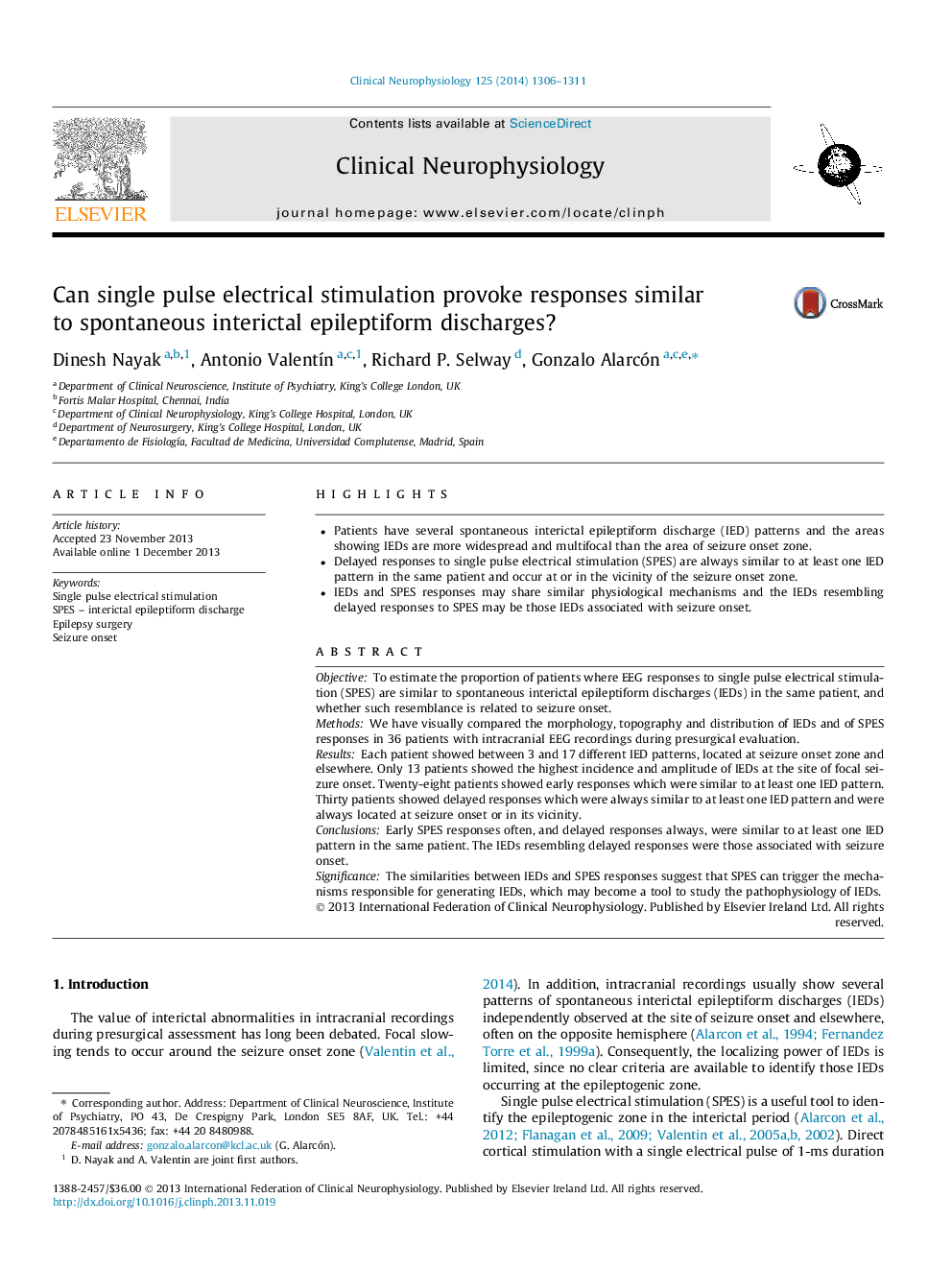| Article ID | Journal | Published Year | Pages | File Type |
|---|---|---|---|---|
| 3043902 | Clinical Neurophysiology | 2014 | 6 Pages |
•Patients have several spontaneous interictal epileptiform discharge (IED) patterns and the areas showing IEDs are more widespread and multifocal than the area of seizure onset zone.•Delayed responses to single pulse electrical stimulation (SPES) are always similar to at least one IED pattern in the same patient and occur at or in the vicinity of the seizure onset zone.•IEDs and SPES responses may share similar physiological mechanisms and the IEDs resembling delayed responses to SPES may be those IEDs associated with seizure onset.
ObjectiveTo estimate the proportion of patients where EEG responses to single pulse electrical stimulation (SPES) are similar to spontaneous interictal epileptiform discharges (IEDs) in the same patient, and whether such resemblance is related to seizure onset.MethodsWe have visually compared the morphology, topography and distribution of IEDs and of SPES responses in 36 patients with intracranial EEG recordings during presurgical evaluation.ResultsEach patient showed between 3 and 17 different IED patterns, located at seizure onset zone and elsewhere. Only 13 patients showed the highest incidence and amplitude of IEDs at the site of focal seizure onset. Twenty-eight patients showed early responses which were similar to at least one IED pattern. Thirty patients showed delayed responses which were always similar to at least one IED pattern and were always located at seizure onset or in its vicinity.ConclusionsEarly SPES responses often, and delayed responses always, were similar to at least one IED pattern in the same patient. The IEDs resembling delayed responses were those associated with seizure onset.SignificanceThe similarities between IEDs and SPES responses suggest that SPES can trigger the mechanisms responsible for generating IEDs, which may become a tool to study the pathophysiology of IEDs.
